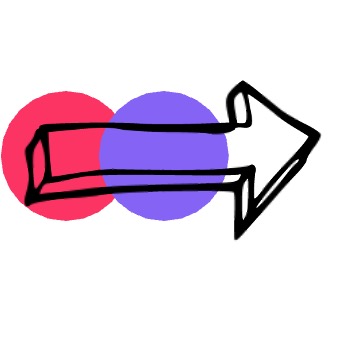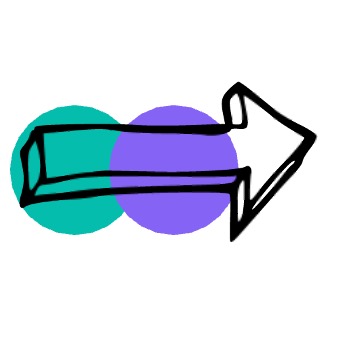
This challenge is currently closed but if you would like to discuss a potential solution, we are still open to conversations. We ran a launch event with the Challenge Holder (South Tees Hospitals NHS Foundation Trust) and you can view the video here.
Support is fully funded by the UK Government through the UK Shared Prosperity Fund. Tees Valley Innovation Challenge is delivered by Edge Innovation Ltd and Health Innovation North East and North Cumbria on behalf of the Tees Valley Mayor and Combined Authority, and the Tees Valley Business Board.
About the Challenge Holder:
South Tees Hospitals NHS Foundation Trust have been working to increase the number of plaster technicians who are confident in the application of hip spicas.
Paediatric hip spicas are required for immobilising children after undergoing elective hip reconstruction (such as for hip dysplasia) or femoral fracture management. The application of hip spicas requires expert knowledge as ineffective application can cause complications or treatment failure.
Nationally, the pool of individuals trained in this specialist technique is reducing and hospitals are under pressure to meet patient demands. This means application of hip spicas are often organised around the availability of a minority of healthcare professionals who are highly practised in hip spica procedures. There are plaster technicians who want to learn and practice the technique but, due to it being a niche procedure, have a lack of opportunity to practice. Even when given the opportunity, barriers such as anaesthesia time constraints, variation between patients and medical procedures, and the pressure of a theatre environment can make it difficult to practice techniques in real life scenarios. At present, there are no tools available that enable independent practice, in a controlled environment.
About the challenge:
In order to provide the opportunity for independent study and practice, South Tees Hospital NHS Foundation Trust have begun to develop a purpose-built mannequin designed to effectively simulate a hip spica procedure. The Trust has internally trialled a preliminary prototype with plaster technicians, receiving positive feedback.
The Challenge is to help the trust to develop a fully functioning prototype, compliant with governing bodies, to give plaster technicians the opportunity to learn, practice and develop their skills independently within a controlled environment. The existence of a purpose-built mannequin would allow for the development of new training systems and has the potential to reach an international market as hip spica procedures are performed globally.
Given it’s specialised purpose it is important the mannequin is designed with consideration of the following requirements:
The trust hopes to promote buy in and wide adoption of the design to create a new gold standard for training specialist hip spica techniques.


Staff
Time-intensive training model: Due to the complexity of spica application, initial training requires in-person teaching. Training follows a time-intensive apprenticeship model that limits protected downtime for training staff. There are also issues with matching trainer and trainee availability.
Low frequency practice: Hip Spica procedures are uncommon and their frequency varies between hospitals. This limits real-world practice opportunities leading to deskilling. There are currently no tools that allow effective, independent practice.
High-pressure learning environment: Plaster technicians lack confidence in high-pressure theatre settings. Practicing in real-life scenarios is challenging due to time constraints (due to anaesthesia) and variations in technique depending on the patient and procedure.

Staff
Independent training model: Independent practice by plaster technicians improves the work-life balance of training staff.
Flexible practice frequency: Trainees can utilise their downtime for independent practice, providing control of how often they practice and helping them maintain their skills.
Controlled learning environment: Plaster technicians maintain and develop their skills, improving their confidence because it allows technicians correct mistakes, refining their technique.
Patients and Guardians
Treatment Outcomes for patients: Ineffective hip spica Application can cause significant issues for patients including:
Effect on Guardians: Longer treatment times force guardians to take more time off work and prolonged hospital create stress for guardians and incur travel expenses.
At home care: Incorrect positioning can make it impossible to use a car seat, go to the toilet or use a nappy comfortably making caring for the child at home difficult.
Wait times: Increased wait times for treatment due to a reduced number of competent staff can cause patients to miss the critical window of time for treatment.

Patients and Guardians
Treatment Outcomes for patients: Improving hip spica training will help to decrease the risk of complications leading to more successful patient outcomes including reducing treatment time, pain and stress for the child.
Effect on Guardians: Reduced treatment time helps to minimise cost and stress for patient guardians.
At home care: Patient care is manageable from home reducing pressure on carers and reducing cost for the NHS.
Wait times: A greater number of specialist plaster technicians reduce wait time for patients helping ensure they receive proper treatment in time.


Efficiency of training: Plaster technicians are required to use a significant amount of their limited training time attending external training classes to gain more in-depth knowledge on hip spica application.
Variation in techniques: Hip Spica application techniques vary between hospitals and individual plaster technicians. Techniques learned in external classes often need to be adapted to those used within a trainees resident hospital. It is important that trainees can develop their own methods and adapt their techniques to each unique case.
Training Standards: General plaster casting training only introduces hip spica techniques so further training is needed to become fully competent. Current training follows an apprentice model, where trainees are mentored by experienced technicians or consultants. Consequently, training standards vary widely by hospital and mentor.
Number of hip spica experts: A lack of plaster technicians confident with hip spica application means there is typically an over reliance on certain individuals to perform the procedure when needed. This creates time scarcity for experts, increasing wait times and further reducing their availability as trainers.

Efficiency of training: Independent training gives plaster technicians greater flexibility as they can choose to practice hip spica techniques during their time at the hospital.
Variation in techniques: A controlled environment allows trainees to replicate medical cases and manage their own learning: focusing on specific skills, refining techniques, and developing new methods.
Training Standards: A purpose-built mannequin can help in the development of new training systems to standardise and maximise the impact of training classes by more effectively simulating real-life constraints.
Number of hip spica experts: A greater number of plaster technicians confident in hip spica application will help hospitals meet demand and shorten wait times whilst reducing the pressure on individuals.


Evidencing Value
Quality of Care:
Improved efficiency:

Evidencing Value
Quality of Care:
Improved efficiency:


To access this support, you must be a small or medium-sized business based in Tees Valley (Darlington, Hartlepool, Middlesbrough, Redcar & Cleveland, or Stockton-On-Tees).
Support is fully funded by the UK Government through the UK Shared Prosperity Fund.
Tees Valley Innovation Challenge is delivered by Edge Innovation Ltd and Health Innovation North East and North Cumbria on behalf of the Tees Valley Mayor and Combined Authority, and the Tees Valley Business Board.
Oops! We could not locate your form.